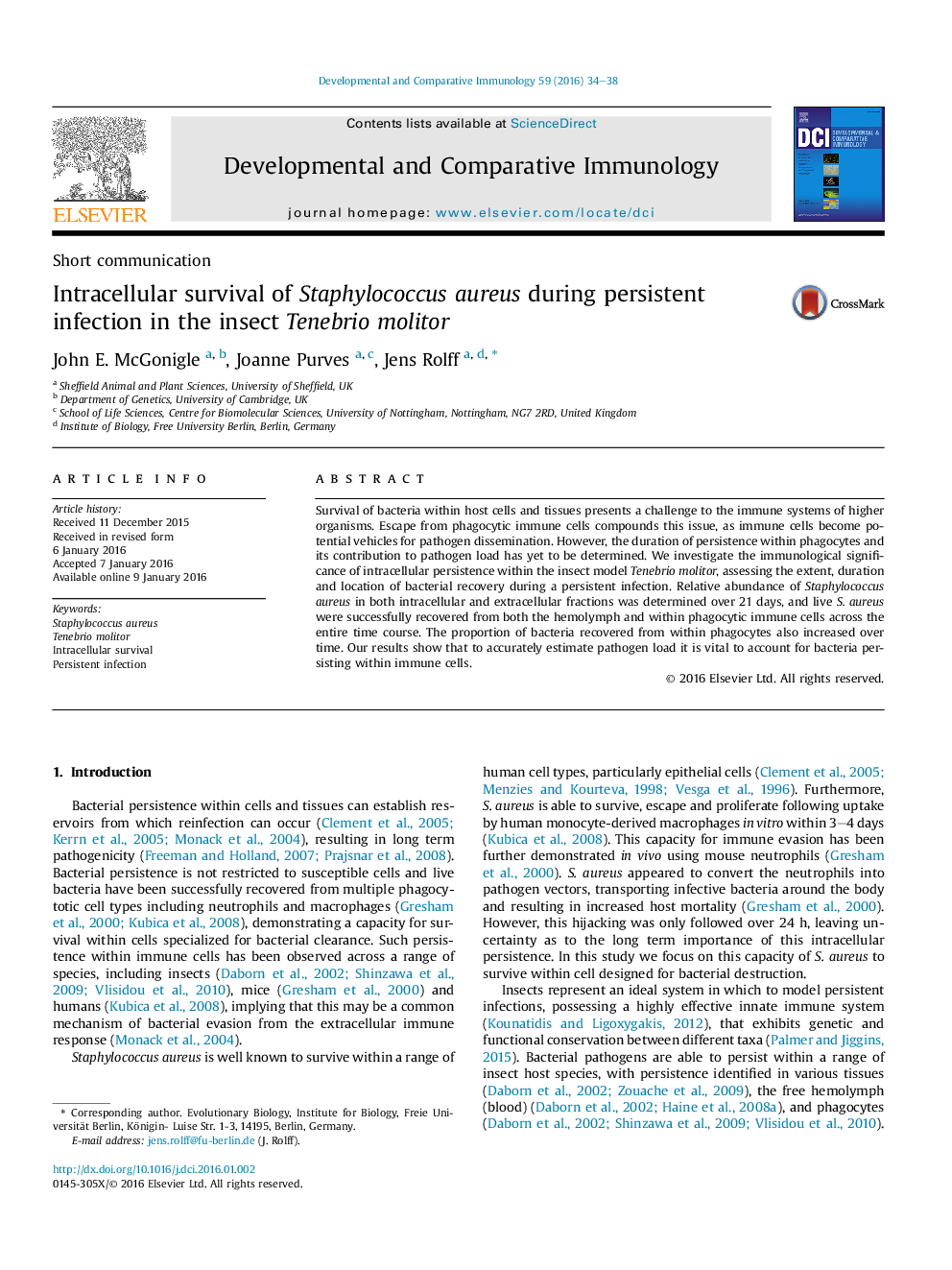| Article ID | Journal | Published Year | Pages | File Type |
|---|---|---|---|---|
| 2428880 | Developmental & Comparative Immunology | 2016 | 5 Pages |
•Long term intracellular recovery of Staphylococcus aureus in vivo.•Live bacteria were recovered from within insect phagocytic cells 21 days post infection.•The relative importance of intracellular persistence increased with time.
Survival of bacteria within host cells and tissues presents a challenge to the immune systems of higher organisms. Escape from phagocytic immune cells compounds this issue, as immune cells become potential vehicles for pathogen dissemination. However, the duration of persistence within phagocytes and its contribution to pathogen load has yet to be determined. We investigate the immunological significance of intracellular persistence within the insect model Tenebrio molitor, assessing the extent, duration and location of bacterial recovery during a persistent infection. Relative abundance of Staphylococcus aureus in both intracellular and extracellular fractions was determined over 21 days, and live S. aureus were successfully recovered from both the hemolymph and within phagocytic immune cells across the entire time course. The proportion of bacteria recovered from within phagocytes also increased over time. Our results show that to accurately estimate pathogen load it is vital to account for bacteria persisting within immune cells.
